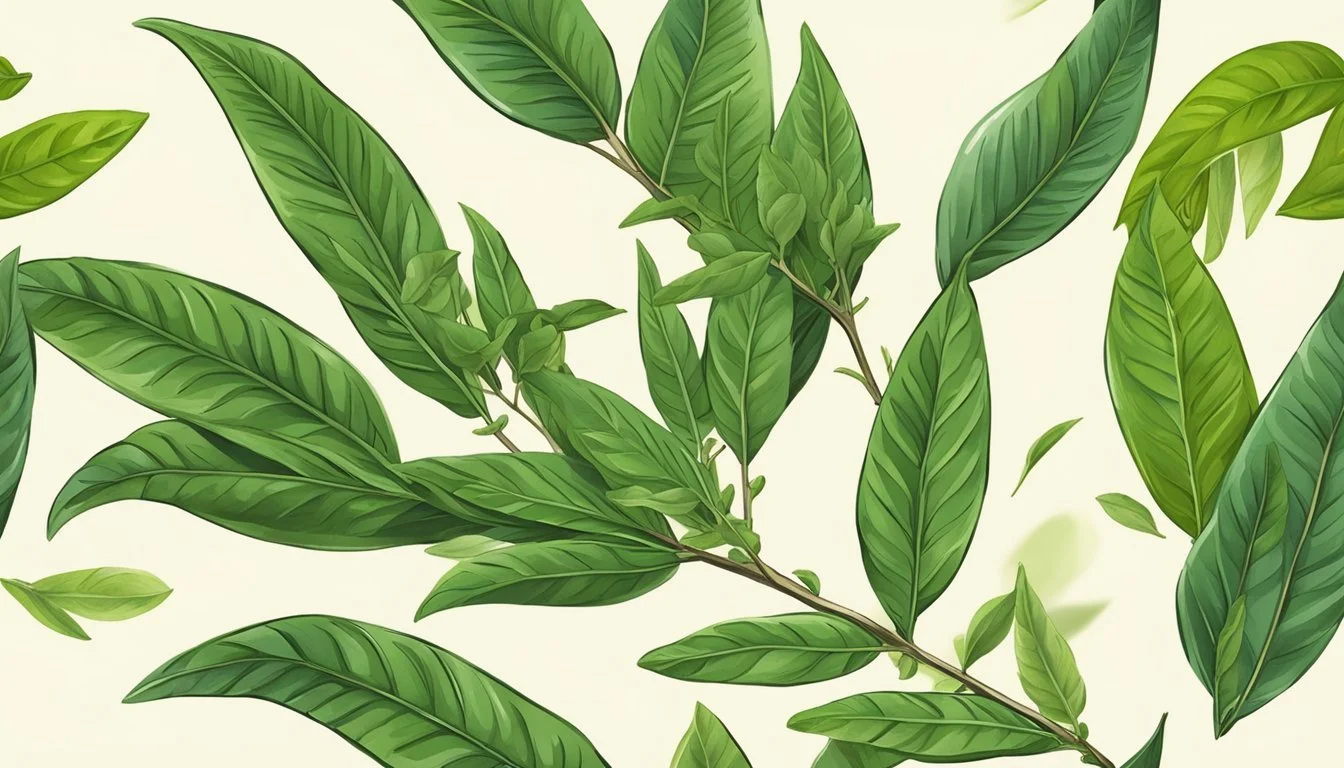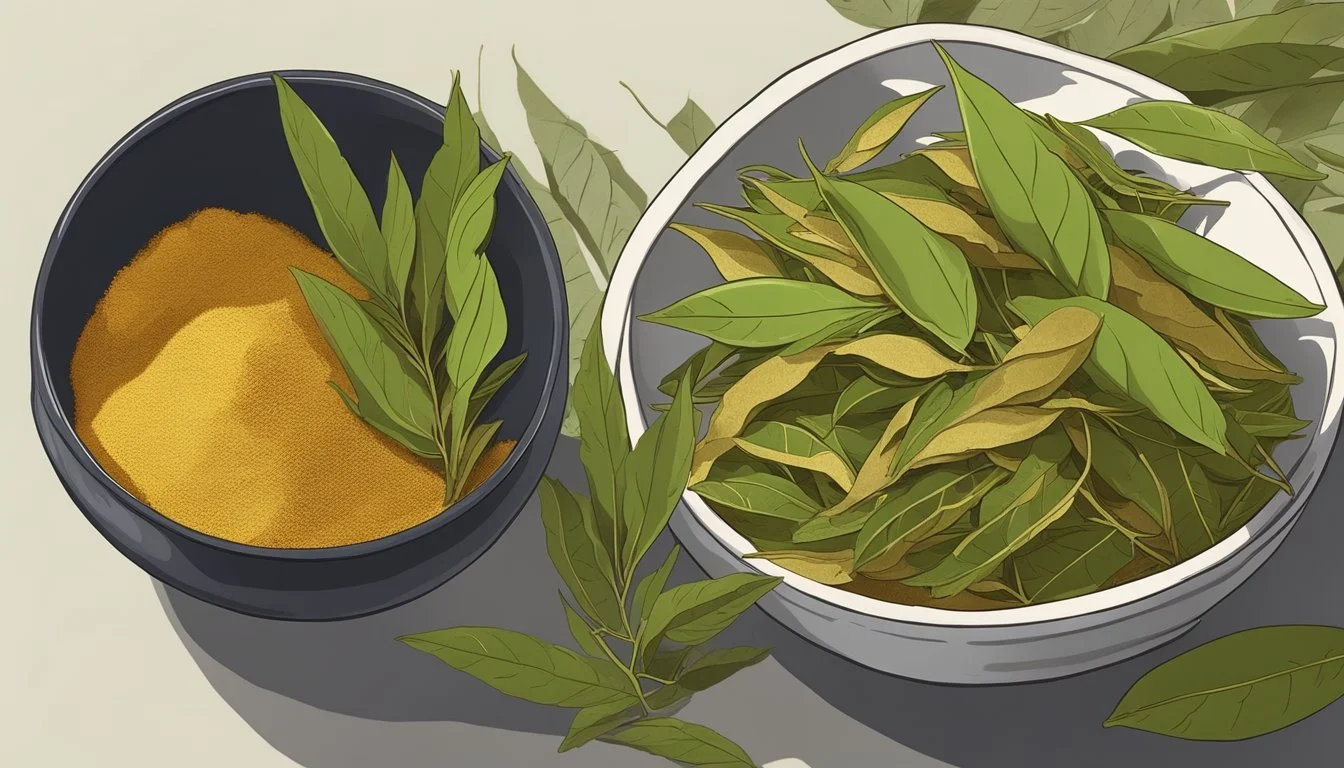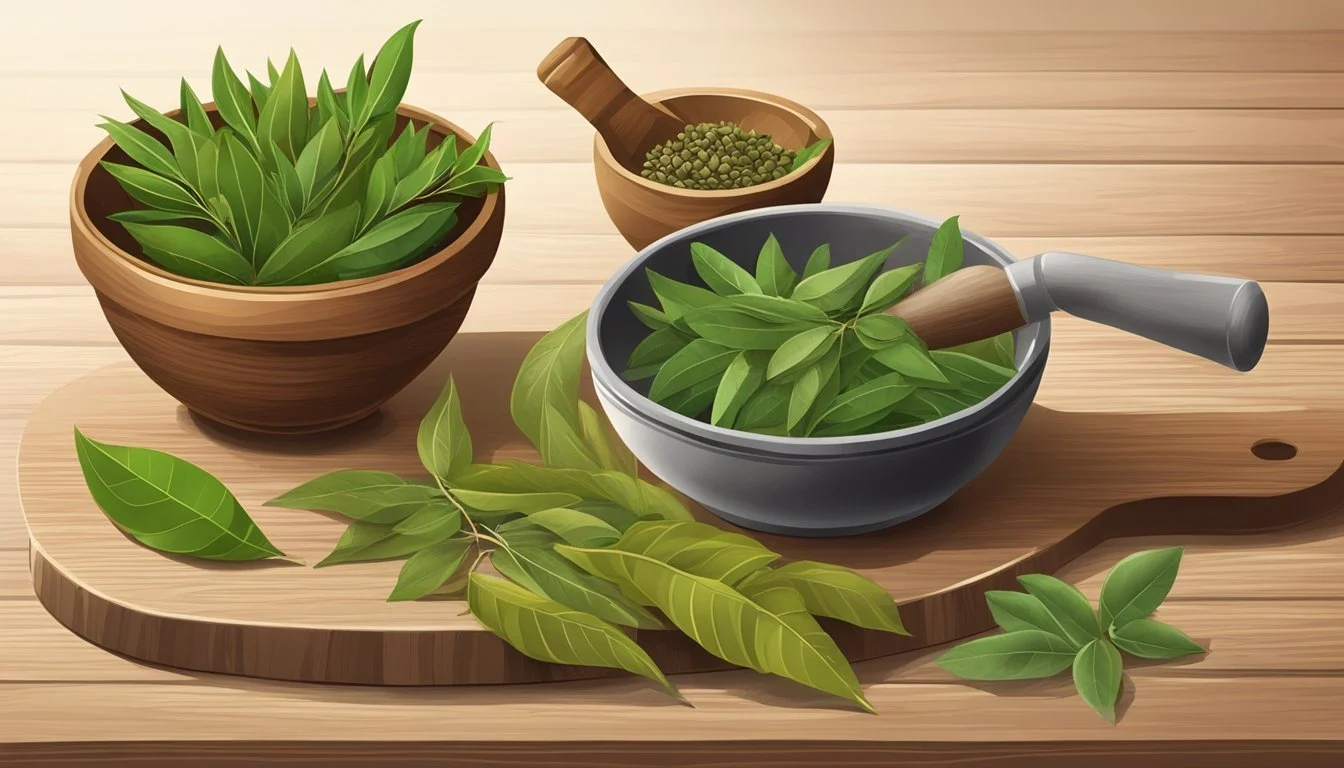Curry leaves Substitutes
Best Alternatives for Authentic Flavor
Finding substitutes for curry leaves can elevate any dish when this essential ingredient is unavailable. Kaffir lime leaves stand out as one of the best substitutes, providing a similar aromatic and citrusy profile. Whether fresh or dried, they merge seamlessly into various recipes, delivering a unique twist.
Basil leaves, commonly used in Mediterranean cuisine, offer a sweet and floral aroma that can replace curry leaves in certain recipes. While different in flavor, basil can provide an intriguing contrast that enriches the dish's complexity.
Lemon zest is another effective alternative, bringing a strong citrusy flavor that complements many dishes. This simple ingredient can mimic the freshness of curry leaves, making it a handy substitute in diverse culinary creations.
Understanding Curry Leaves
Curry leaves are a staple in Indian cooking, prized for their unique flavor, aromatic qualities, and numerous health benefits. Besides enhancing the taste of dishes, they offer a range of nutritional benefits.
Flavor Profile
Curry leaves have a distinctive, pungent aroma reminiscent of citrus and anise. When added to dishes, they impart a complex flavor that is both earthy and slightly bitter with a hint of sweetness. This complexity makes them integral to several Indian dishes, where they're often tempered in hot oil to release their fragrant essence.
Key flavors:
Citrus-like aroma
Earthy undertones
Mild bitterness with slight sweetness
Nutritional Benefits
Curry leaves are rich in various nutrients and antioxidants. They contain vitamins A, B, C, and E, alongside iron, calcium, and magnesium. These nutritional properties contribute to various health benefits, such as improved vision, stronger immune system, and better digestion.
Notable Nutrients:
Vitamins: A, B, C, E
Minerals: Iron, Calcium, Magnesium
They also have health benefits like anti-inflammatory and cholesterol-lowering effects, making them a valuable addition to a balanced diet.
Culinary Uses
In Indian cooking, curry leaves are a versatile ingredient, used in a wide range of dishes from curries to soups. They are typically added to hot oil at the beginning of cooking to release their full aromatic potential. Besides traditional dishes, they can be used to flavor chutneys, rice dishes, and even bread.
Common culinary applications:
Tempering in curries and dals
Flavoring rice dishes and soups
Enhancing chutneys and pickles
Their fragrant nature and multi-faceted flavor make them an irreplaceable component in authentic Indian cuisine.
Why Substitute Curry Leaves?
Using substitutes for curry leaves can be crucial in several situations, such as when they're unavailable, there's an allergic reaction, or a different flavor profile is desired.
Availability Issues
Curry leaves might not be easy to find in all regions. They are commonly used in South Indian cuisine and may be more readily available in areas with a large Indian population. In other places, such as rural areas or smaller towns, they are scarce.
Therefore, cooks often need to find suitable substitutes. Dried curry leaves or kaffir lime leaves can be good alternatives. Basil leaves and lime zest can also work in a pinch. This makes it easier to maintain the integrity of the dish even when curry leaves are not on hand.
Allergic Reactions
Some individuals may have allergies to curry leaves, causing mild to severe reactions. Symptoms can range from skin rashes to gastrointestinal distress. This makes it imperative to find replacements that deliver a similar flavor without causing health issues.
For those dealing with allergies, lemon balm leaves or lemon zest are good options. These alternatives can replicate some of the aromatic qualities of curry leaves while keeping the meal safe to eat.
Desired Flavor Variations
Sometimes, even if curry leaves are available, a different flavor profile might be desirable. Curry leaves have a distinct, citrusy flavor that doesn't always fit every dish perfectly. In such cases, altering the flavor can enhance the dish's appeal.
Bay leaves, cilantro, and makrut lime leaves offer a different yet complementary taste. They can provide varied yet satisfying flavors, helping cooks tailor their dishes to different palates. This flexibility in seasoning can elevate the culinary experience.
Substitutes for Curry Leaves
When curry leaves are unavailable, other ingredients can provide a similar aromatic and flavorful experience. Each substitute has unique characteristics and may require different preparation methods or quantities for optimal results.
Bay Leaves
Bay leaves have a distinct, mildly peppery flavor with subtle hints of mint and pine. While not a perfect match for curry leaves, they can introduce a rich taste to soups, stews, and curries.
To use bay leaves as a curry leaves substitute, add one or two whole leaves early in the cooking process to allow their flavors to infuse fully. Remove the bay leaves before serving, as they can be tough and stiff.
Though they bring a different flavor profile, bay leaves can enhance the overall taste of your dish without overpowering other ingredients.
Kaffir Lime Leaves
Kaffir lime leaves, also known as Makrut lime leaves, offer a strong, citrusy flavor, making them one of the best substitutes for curry leaves. They are often used in Southeast Asian cuisine and can infuse a dish with a refreshing lime aroma.
Replace 10 curry leaves with 5 fresh or dried kaffir lime leaves. Be sure to crush or tear the leaves before adding them to release their essential oils. They can be used in curries, soups, and stir-fries.
Kaffir lime leaves' intense citrus flavor can closely mimic the slight citrus undertone found in curry leaves, making them an excellent alternative.
Lemon Balm
Lemon balm, a member of the mint family, has a pleasant lemon scent and flavor. It can serve as a curry leaves substitute, especially in dishes where a fresh, bright note is desired.
Use fresh lemon balm leaves to replace curry leaves. About 1 tablespoon of chopped lemon balm equals 8-10 curry leaves. It is best added towards the end of cooking to preserve its delicate flavor.
Lemon balm can enhance the overall aroma and taste of your dish with a subtle lemony tang, complementing a variety of recipes.
Citrus Zest
Citrus zest, such as lemon zest or lime zest, provides a sharp, vibrant citrus flavor that can substitute for the unique aroma of curry leaves. The zest is the outermost layer of the citrus peel and contains essential oils.
Use the zest of one lemon or lime to replace 10-15 curry leaves. Lightly toasting the zest in some butter or oil before adding it to your dish can mellow its flavor and release its aromatic properties.
Citrus zest can effectively replicate the citrus notes in curry leaves, making it a versatile and accessible substitute.
Herbal Substitutes
When you find yourself missing curry leaves in your kitchen, several aromatic herbs can step in as excellent alternatives. Each substitute brings its own unique flavor and aromatic qualities, making them perfect for various culinary applications.
Basil
Basil leaves, a staple of Mediterranean cuisine, can replace curry leaves in many recipes. They offer a sweet, floral aroma that differs from the slightly bitter taste of curry leaves but can still complement similar dishes.
Fresh basil is best for achieving a rich, aromatic profile. Use basil leaves in a 1:1 ratio to curry leaves, chopping them finely for a similar texture. Keep in mind that basil loses its potency when dried, so fresh leaves are preferable for the best results.
Mint Leaves
Mint leaves provide a bright, refreshing flavor. While their taste is more pronounced and less complex compared to curry leaves, they add a pleasant herbal note to recipes. Mint is especially suitable for dishes requiring a fresh and invigorating touch.
Use fresh mint leaves rather than dried to capture their full flavor. Typically, mint leaves can be used in a 1:1 ratio, but consider starting with a smaller amount and adjusting to taste to avoid overpowering the dish.
Cilantro
Cilantro, also known as coriander leaves, is another good option. It has a distinct, slightly citrusy flavor that pairs well with many dishes where curry leaves are used. Although it lacks the bitter edge of curry leaves, cilantro’s fresh taste can enhance the overall flavor profile.
Fresh cilantro should be chopped and added towards the end of cooking to maintain its delicate flavors. Start with the same quantity as you would use curry leaves, making adjustments based on your taste preferences.
Using Dried Curry Leaves
Dried curry leaves serve as an excellent substitute when fresh ones are not available. These aromatic leaves retain much of their flavor even after drying, making them a great alternative in various recipes.
To substitute dried curry leaves for fresh ones, a common ratio is 2:1. For instance, use 20 dried curry leaves to replace 10 fresh ones. This ratio helps maintain the desired intensity in your dish.
Flavor Profile:
Dried curry leaves are aromatic and slightly bitter.
They provide a similar, although slightly milder, taste compared to fresh curry leaves.
Usage Tips:
Add dried curry leaves at the beginning of cooking to release their flavor.
Crush them slightly before adding to enhance their aromatic properties.
Store dried curry leaves in an airtight container to preserve their aroma.
Recipes:
Curries: Enhance the dish by adding at the tempering stage.
Rice Dishes: Incorporate into biryanis or flavored rice for an extra layer of taste.
Snacks: Mix into batters for pakoras or savory pancakes.
By understanding how to use dried curry leaves effectively, one can ensure that the robust flavors they bring are not lost, making them an indispensable ingredient in cooking.
Innovative Cooking Techniques
Exploring substitutes for curry leaves can elevate your culinary experiments. Using alternative ingredients innovatively ensures that your dishes remain flavorful and aromatic.
Infusing Oils
Infusing oils with ingredients like kaffir lime leaves or lemon zest can mimic the flavor profile of curry leaves. He suggests using ghee or a neutral oil such as sunflower oil. Start by heating the oil on low heat at the beginning of cooking. Add substitutes like cumin, coriander seeds, or dried curry leaves.
Let the ingredients simmer for about 10-15 minutes to release their flavors. Strain the oil before using it in dishes. This method ensures the essence of the substitutes is captured and enhances the overall taste.
Creating Spice Mixes
Creating custom spice mixes can also effectively replace curry leaves. A blend including curry powder, cumin, and crushed kaffir lime leaves can be a flavorful substitute. Mix 1 tablespoon of curry powder with 1 teaspoon of ground cumin and 1 teaspoon of crushed kaffir lime leaves.
This blend can be added early in the cooking time, ideally at the beginning of cooking to allow the flavors to meld. An alternative mix might include lemon zest with ground coriander seeds. These mixtures offer a nuanced flavor that replicates the complexity of curry leaves.
Pairing Substitutes With Food Types
Selecting appropriate substitutes for curry leaves enhances the flavor profile of various dishes. Here are some tailored recommendations for pairing these substitutes with meats, vegetarian dishes, and rice or grain-based meals.
Meats and Poultry
For meat and poultry dishes, kaffir lime leaves and lemon zest provide excellent alternatives to curry leaves. Kaffir lime leaves offer a citrusy aroma that brightens chicken and pork recipes, while lemon zest adds a sharp, tangy flavor perfect for marinades and rubs.
Bay leaves can also be used to impart a deeper, earthy taste, ideal for beef stews and lamb curries. These substitutes should be added during the cooking process to allow their flavors to meld with the meats.
Vegetarian and Vegan Dishes
In vegetarian and vegan dishes, basil leaves and lemon balm are excellent curry leaf substitutes. Basil offers a sweet, floral note that pairs well with vegetables like eggplant or zucchini in stir-fries and curries.
Lemon balm imparts a citrusy, slightly minty flavor that enhances the freshness of soups and mixed vegetable stews. Kaffir lime leaves can also be used to add an exotic touch to tofu and lentil-based dishes, providing a slightly sour, fragrant element.
Rice and Grains
For rice and grain dishes, dried curry leaves and bay leaves are suitable alternatives. Dried curry leaves should be used in a quantity of two dried leaves for every fresh leaf. They add a subtler curry leaf flavor, making them perfect for biryanis and pilafs.
Bay leaves offer a rich, complex flavor that complements the simplicity of rice casseroles and quinoa salads. Lemon zest can also be incorporated to provide a zesty kick, ideal for brightening up rice dishes served alongside seafood and fish.
Conclusion
Finding the best curry leaves substitute is essential for maintaining the flavor integrity in your dishes. Various alternatives can effectively replace curry leaves, each with unique characteristics and potential benefits.
Kaffir lime leaves stand out as a popular choice. Their strong citrusy note brings a similar aromatic touch to recipes. Whether fresh or dried, they offer great versatility.
Lemon zest is another simple and accessible substitute. Providing a citrus edge, it works well in various dishes, especially those requiring a bright, fresh tone.
If you frequent supermarkets, dried curry leaves may be available. They can serve as an excellent replacement, though doubling the quantity would be necessary for achieving a similar effect.
Other alternatives include basil leaves, with their sweet and floral aroma, and cilantro, which can add a fresh, herbal undertone to your cooking. Bay leaves and lemon balm leaves also sit well in many recipes when curry leaves are unavailable.
Understanding these substitutes allows for flexibility in cooking while preserving the signature flavors associated with the curry tree. Adjusting your recipes with these options can ensure your culinary creations remain delightful despite the absence of curry leaves.






